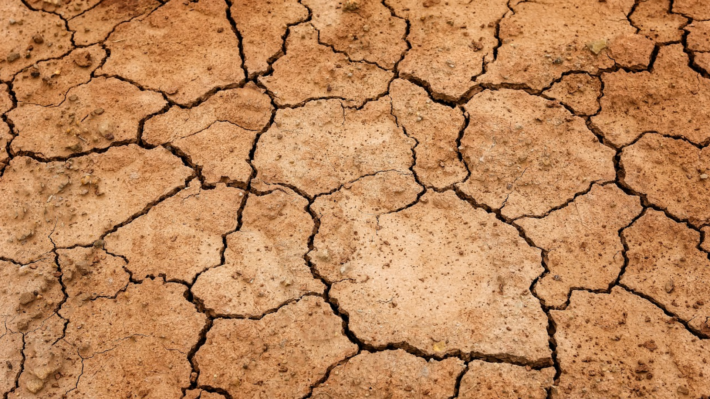Removing Toxins from Our Food System

It’s time to have a heart to heart about the importance of removing toxins from our food, and the crucial role it plays in the progression of both capitalism and humanity itself. Surprised? Well, you won’t be once we unravel the hidden world of food toxins in this insightful piece.
This kind of information, more than often, stays hidden under the wraps — but not today! We’re on a mission to share this knowledge and shed light on the different types of toxins that could be secretly gatecrashing your meals. Stay tuned, as we embark on this exciting yet critical pursuit of ‘toxin-free’ dining!
Overview of Food Toxins and Their Impact
The subject of food toxins is pertinent to the evolution of capitalism and humanity. A toxin-free future is not just beneficial for us as individuals but for society at large, and ultimately reflects the necessity to rethink our food production and consumption patterns.
Types of Food Toxins
Food-related toxins can be majorly categories into two types – naturally occurring toxins and artificially added toxins.
Naturally Occurring Toxins
These types of toxins are not added to food but occur naturally in certain types of foods. For instance, some varieties of mushrooms and shellfish contain toxins. Mycotoxins are also found in moldy foods, with aflatoxins, a sub-type of mycotoxins, being commonly present in nuts, grains and spices. While removing or avoiding these toxins can be a challenge, proper cooking methods and assuring food freshness can significantly mitigate the risk.
Artificially Added Toxins
Artificially added toxins, on the other hand, are chemical substances introduced during the food production and preservation process. Formaldehyde, nitrates, and nitrites are exemplary toxins that are often artificially introduced to foods, mainly to extend shelf life, improve taste or appearance.
Common Sources of Toxins in Food
Awareness about the sources of food toxins is vital for making healthier choices in our daily lives.
Pesticides and Herbicides
The use of pesticides and herbicides in conventional farming practices has effectively increased yields over the years. However, the residue of these chemicals in fruits and vegetables forms a significant portion of the toxins in our food supply.
Food Additives and Preservatives
Food additives and preservatives are widely used in the food industry to improve taste, texture, color, and extend shelf life. Aspartame, monosodium glutamate (MSG), and sodium nitrite are a few examples of common food additives that can cause adverse health effects when consumed in large quantities. Food packages and canned foods are other considerable sources of toxins that we often ignore.
In conclusion, removing toxins from our food is an important step towards improving the quality of life and advancing the progress of our society. Being aware of the types of food toxins and their common sources empowers us to make more informed choices and contributes to the collective efforts for a healthier future.
Health Implications of Consuming Toxins
Various research studies have revealed that consuming toxins, both natural and artificial, present in our food could lead to detrimental health effects. These effects range from immediate short-term health complications to long-term health risks that may impact the overall quality of life. In this section, we will explore these health implications.
Short-Term Health Effects
In the short term, consuming toxins from food sources can cause immediate and acute health problems. These typically manifest as food poisoning or foodborne illnesses. Symptoms could include nausea, vomiting, abdominal pain, diarrhea, fever, and fatigue, amongst others. These symptoms usually begin within a few hours of consuming contaminated food but could sometimes take days or even weeks to appear.
Moreover, some toxins can induce allergic reactions in susceptible individuals. These reactions could range from mild irritability and skin rashes to severe anaphylaxis, which is a medical emergency. It’s crucial to note here that reactions to food toxins can vary greatly among individuals depending on their body’s response and the amount of toxin ingested.
Long-Term Health Risks
While immediate symptoms caused by food toxins might be temporary and curable, long-term exposure to these toxins poses more serious health risks. The accumulation of toxins can disrupt numerous bodily functions, leading to chronic illnesses. For instance, consistent consumption of heavy metals like lead or mercury from contaminated food sources may cause neurological disorders like Alzheimer’s disease and Parkinson’s disease.
Existing scientific evidence also suggests that toxins like pesticides and artificial food additives may increase the risk of certain types of cancers. Other potential long-term health implications of toxin consumption include hormonal imbalance, immune system disruption, liver damage, kidney failure, and respiratory issues.
In conclusion, understanding the link between toxin ingestion and these health implications underscores the mission-critical importance of removing toxins from our food. The next time you’re at the grocery store or ordering a meal, remember – every bite counts. Making informed choices about what you consume goes a long way in safeguarding your health and the health of future generations. In the next section, we will outline strategies and tips to help minimize toxin ingestion.
Strategies for Removing Toxins from Food
In the pursuit of raising our food’s safety and quality, some strategies have become prominent. We believe that removing toxins from our food is mission-critical to the evolution of capitalism and humanity. Here are detailed insights into some significant strategies for evicting toxins from our diet.
Organic Farming Practices
Organic farming practices play a significant role in eliminating toxins from our food, thereby contributing significantly to the food safety paradigm. By using natural methods to repel pests and enrich the soil, these practices address the primary entrance points for toxins in our food chain. Organic farming discourages the use of toxic pesticides and synthetic fertilizers, promoting ecological balance, and conserving biodiversity. It focuses on growing food that is not only healthy but also eco-friendly. By excluding toxic chemicals, it ensures the food retains nutrient content and stays free of artificial toxins. As consumers, opting for organically grown food can be a step towards a toxin-free diet.
Government Regulations and Policies
Government regulations and policies represent another essential strategy for removing toxins from food. Legislatures worldwide are waking up to the need to regulate the food industry’s toxin levels. Policies are in place to control the amount and type of pesticides used in farming, limit harmful additives and preservatives in processed foods, and mandate regular inspection of food production facilities. Stricter guidelines for reducing toxin levels bring in accountability and transparency, pushing food businesses towards best practices.
Toxins in food pose a significant risk, but with concerted efforts from consumers, industries, and decision-makers, we can redefine food safety. Advocacy for organic farming and stringent regulations is more than a lifestyle choice; it’s a transformative mission for a healthier capitalist society.
The Role of Consumers in Reducing Food Toxins
The task of reducing toxins in our food is not just limited to food producers and regulators. Consumers play a significant role in this mission. By making responsible choices and advocating for cleaner food systems, consumers can influence the toxin levels in their food.
Making Informed Food Choices
Enlightening oneself about the various types of toxins in food is the first step to reduce toxin intake. Consumers need to be conscious about their food choices and understand where and how their food is produced. This involves checking food labels, preferring organic or pesticide-free products, and avoiding processed foods that contain harmful additives or preservatives.
There has been an observable shift towards clean eating, with consumers increasingly moving towards organically grown produce that’s free from synthetic pesticides and genetically modified organisms (GMOs). This assists not only in toxin reduction but also promotes healthier bodies and environment.
Note: Prioritize purchasing produce from local farmers’ markets where food is likely to be fresher, more nutritious, and less exposed to toxins.
Advocacy and Awareness
The role of consumers extends to being advocates for cleaner and safer food. This can be achieved by spreading awareness about the health hazards of consuming toxin-rich foods and the benefits of healthier alternatives.
Organizations such as the non-GMO project offer resources for consumers interested in advocating for toxin-free food. Moreover, consumers can lobby with their purchases by supporting businesses that prioritize food safety and health over profit.
Joining forces with consumer groups, participating in campaigns, signing petitions, and raising voices against harmful food practices can exert pressure on food companies and influence government regulations. Together, consumers have the power to create a more transparent, accountable, and toxin-free food system.
In conclusion, by making informed food choices and actively advocating for healthier food systems, consumers can significantly contribute to the reduction of toxins in food –a mission that we believe is critical to the evolution of capitalism and humanity.
Reminder: “Every time you spend money, you’re casting a vote for the kind of world you want.” – Anna Lappé
The Future of Food Safety in Capitalism
Food safety is an issue that cannot be overemphasized in the realm of capitalism. As corporate interests increasingly shape global food systems, the potential for harm due to toxins in our food supply only increases. The future of food safety in capitalism, therefore, hinges on innovative technologies in food production and collaborative efforts for a toxin-free future.
Innovative Technologies in Food Production
The dream of removing toxins from our food is gradually being realized through the development of innovative technologies. For instance, advances in genetic engineering haave resulted in crops that can better resist pests, reducing the need for potentially harmful pesticides and herbicides. Biofortification is another promising avenue, with food crops being fortified at the molecular level to enhance their nutritional content.
Food monitoring devices have also become more sophisticated, allowing for more accurate detection of contaminants in our food. For instance, portable spectrometers can now provide instant readings on the levels of various contaminants present in a sample of food.
Nonetheless, these innovations will only make a real difference if they are adopted in a responsible and holistic manner, recognizing not just profitability but also long-term sustainability and public health.
Collaborative Efforts for a Toxin-Free Future
Collaborative efforts, shared knowledge and common goals are instrumental in our mission to remove toxins from food. Governments, corporations, and consumers must work hand in hand to ensure that the safety of our food supply is a top priority.
From stricter regulations and enforcement at the governmental level, to transparency in sourcing and production practices among corporations, to informed choices by consumers, everyone has a role to play if we are to succeed in our quest for a toxin-free future.
For example, consumers can leverage their purchasing power to support companies that prioritize toxin-free food, while corporations can invest in safer, more sustainable production methods driven by demand.
In conclusion, the future of food safety in capitalism depends heavily on both innovative technologies in food production and collaborative efforts. Together, we can move towards a toxin-free future, and ensure the evolution of capitalism and humanity in harmony with our environment.


